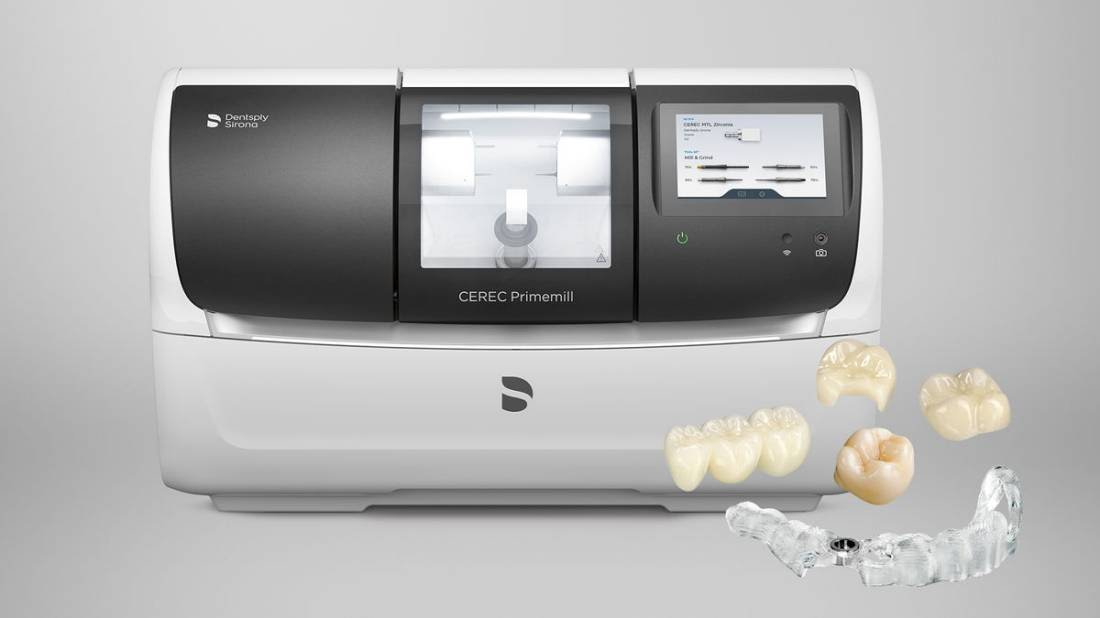Fresh from the International Dental Show (IDS), Dr. Ahmad Al-Hassiny sits down with Max Milz, a digital visionary from Dentsply Sirona, to dissect the current landscape of digital dentistry. This wide-ranging conversation delves into cloud integration, the four-decade evolution of CEREC, and why sometimes "boring is the new sexy" in dental technology.
Listen on Spotify
Post-IDS Reflections: Digital Dentistry's New Direction
The dental industry's premier global gathering saw nearly 135,000 visitors and 2,000 exhibitors converge to showcase innovations. According to Max Milz, the prevailing theme this year marked a significant shift: "The movement to the cloud and to AI is now really becoming industry standard."
Two years ago, Dentsply Sirona stood relatively alone in championing cloud-based solutions. Now, virtually every major dental company is racing to build comprehensive platforms. The industry emphasis has evolved toward integration—bringing disparate technologies together in cohesive ecosystems that enhance practice efficiency and patient outcomes.
DS Core: The Operating System for Modern Dental Practices
Dentsply Sirona's cloud platform DS Core has gained remarkable traction, now connecting approximately 43,000 practices and labs with over 50,000 devices ranging from scanners to mills and printers. In just two years, they've introduced 85+ additional functionalities.
"Two years ago, what was it? It was pretty much cloud storage and a few other functions. And now there's so much more on there," Max Milz explains. Recent advancements include X-ray diagnostics capabilities directly in DS Core and AI-powered tooth segmentation for enhanced 3D visualization.
Max Milz frames the platform not as technology for technology's sake, but as "the operating system of the practice." He draws parallels to consumer technology: "Nobody talks about Windows or iOS or whatnot. It's really about moving that to the back and talking about what you can do with it."
The 40-Year Legacy of CEREC
The conversation takes a nostalgic turn when Max Milz mentions CEREC's 40th anniversary. Born in 1985, CEREC pioneered chairside dentistry, revolutionizing how crowns are produced in dental practices.
Far from being obsolete technology, Max Milz suggests that the rise of 3D printing actually "reignites CEREC" by bringing renewed attention to chairside dentistry. While adoption barriers exist—primarily the substantial initial investment—the fundamental value proposition remains compelling: single-visit dentistry that saves both practitioner and patient time.
"If you look at a dental practice, what's the most expensive thing? It's not the equipment. It's you," Max Milz tells Dr. Al-Hassiny.
"Every minute of your time that you spend not on a patient's mouth doing the things that only a dentist can do... it's really about single-visit saves the patient time, saves the dentist time."
The Great Debate: Milling vs. 3D Printing
Perhaps the most illuminating segment explores the contentious milling versus 3D printing debate currently polarizing the industry. While 3D printing has generated tremendous excitement due to lower entry costs, Max Milz articulates several compelling advantages that milling maintains:

Material versatility: "A zirconia crown or a LiSi crown is a better, stronger crown, and you can't get that out of a printer."
Equipment longevity: When Dr. Al-Hassiny confirms his CEREC mills have operated for 8+ years, Milz notes, "Printers don't have the same lifetimes as mills."
Workflow efficiency: Milled restorations require minimal post-processing compared to printed alternatives, which demand washing, curing, and manual finishing.
Clinical predictability: Milled materials have established track records of clinical performance, while newer printing materials continue to evolve rapidly.
The conversation reveals a nuanced perspective: while printing offers advantages for certain applications (models, surgical guides, night guards), milling remains superior for definitive restorations. As Max Milz succinctly puts it, "Boring is the new sexy because you have something that's proven."
Revolutionary Dental MRI: The Next Imaging Frontier
The podcast concludes with a fascinating glimpse into dental MRI technology—a collaboration between Dentsply Sirona and Siemens Healthineers recently cleared in Europe. This radiation-free imaging modality visualizes soft tissues in ways CBCT cannot, offering unprecedented clinical insights for implantology, endodontics, and inflammation detection.
"An MRI shows you the actual nerve canal. It's able to show you if something is in acute inflammation or if it's scar tissue," Max Milz explains. This advancement parallels how CBCT initially entered dentistry—beginning in universities and specialized settings before broader adoption.

Prioritizing Everyday Dentistry
As the conversation wraps up, Max Milz offers a refreshingly pragmatic perspective on what truly matters in dental technology: "Look at what moves the needle for everyday dentistry. What's bread and butter? Prevention, hygiene, restoration. Those are the things that matter."
While all-on-four implant procedures and veneer cases receive disproportionate attention, Max Milz reminds listeners that "it's not the fancy all-on-four stuff... it's first of all, prevention and exams. Secondly, it's endo. Thirdly, it's resto, and then it's simple implants... [with] crowns, crowns, crowns" forming the financial backbone of most dental practices.
This grounded perspective serves as a valuable counterbalance to the industry's tendency to fixate on cutting-edge technologies that may not address day-to-day practice realities.
This article is based on the Digital Dentistry Decoded podcast episode featuring Dr. Ahmad Al-Hassiny in conversation with Max Milz of Dentsply Sirona.

